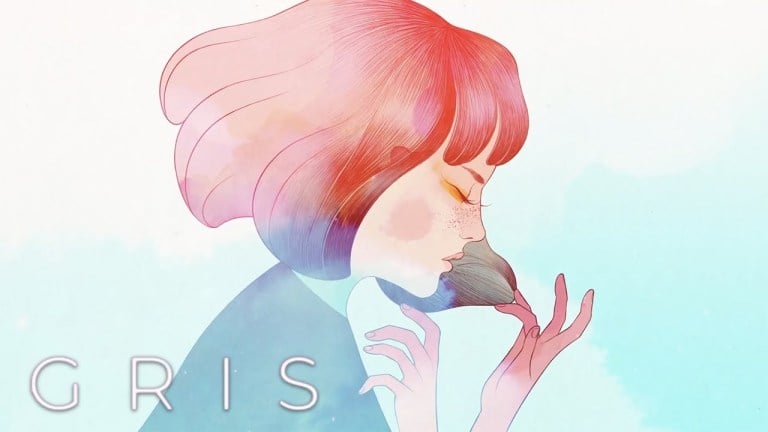Sometimes, you pick a book up and you open it expecting to read a chapter, maybe two. A few bathroom and snack breaks and 10 hours later you turn the last page, a soft “paff” accompanies shutting the back cover, and you feel completely satisfied, filled with a restless energetic contentment. It is a thing that happens when the world of the book, and the characters who color the walls of that world, are so beautiful and more importantly, so intriguing, that to rend yourself from the action of their lives before their ends are known would make your world feel less vivid. And sometimes, that book isn’t so much a book; sometimes it’s a video game. One called “Gris.”
Devolver Digital started in 2009 by publishing “Serious Sam” remakes and has since grown into one of the top mid-size publishers in the world, and for good reason. Focusing on indie games, Devolver has published some of your favorite games, like “Hotline Miami,” and soon-to-be favorite developers like Free Lives (a South African team who made a sex-positivity title called “Genital Jousting”). Part of what makes Devolver so good is its discerning eye, its ability to find indie talent, something it succeeded in doing when the publisher linked up with the Spanish duo-cum-team Nomada Studio to launch debut title “Gris.”
“Gris” is a game about a girl. And it’s a game about a dress imbued with magical fabric. Well, it’s really about a grayscale world being made to breath color by the adventures of a girl whose voice is taken from her. It is as fantastic and surreal as that. Color and magic in the game are intertwined in the episodic narrative which sees our protagonist fall from the hand of the broken statue of a woman into a world of gray (hence “Gris,” french for gray). The player puzzles, 2D-side-scrolls and platforms their way through a number of carefully constructed environments, each of which holds new developments and upgrades for the dress. The dress becomes a heavy block allowing the girl to weather a storm, or the dress becomes a propeller for the underwater portion of the game. And each time the player makes it through an environment, the statue begins to come back together, and the world gets a little bit more colorful.
Working with Roger Mendoza (Producer) and Adrian Cuevas’ (Technical Director) original game concept, Creative Director and Lead Artist Conrad Roset and his small group of artists and animators make a compelling argument for simplicity. The design aesthetic of the game is clean and understated but when combined with the evolving color palette, the game takes on a wonderful and soft majesty. Every panorama in the game is caringly constructed and colored in a way that makes them feel like the player’s private treasure find. The animation, too, is fluid, allowing for a natural feel that is reinforced by the smooth mechanics in the game. Learning new gained skills is intuitive which feels right for this game, one about growth.
And worry-free progression is exactly what the game feels like to play. Puzzlers and platformers, but especially puzzlers, are correlated in my head with a degree of difficulty at baseline that makes them feel like challenge games. I think it’s something about the lack of enemies that makes creators feel the need to complicate them. And some of these games are exactly made to be difficult, like “Super Meat Boy” or “I Wanna Be The Boshy,” both games that come to be championed by the speedrunning community because of high skill and speed returns on time and practice investment. “Gris,” on the other hand, feels like it is made for the player to succeed. Chiefly, there is no dying. You only need to restart a zone if you missed one of the optional collectibles, which are easily visible and not too difficult to get to. The game flow is intuitive, with new areas being easy to find and instructions clear, even with extremely minimal in-game text. If hundred percenting (the practice of getting all achievements and in-game items) this game wasn’t completely beside the point, you could easily do so without looking up a guide. And it wouldn’t take too long either.
“Gris” is short, with story gameplay between 2 1/2 and five hours based on play-through speed and time spent gawking and taking screenshots. But when you get to the end, in an environment akin to heaven, and the final cutscene ends, you’ll feel that “Gris” was sweet. Buy it, buy it, play it once, play it twice. I know I will.
Contact Omar El-Sabrout at omarel ‘at’ stanford.edu.
